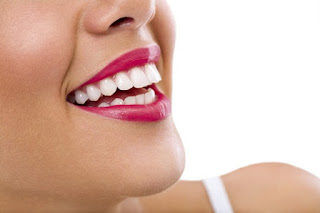Choosing the Best Mouthguard for Contact Sports
When participating in contact sports, a high-quality mouthguard is essential for protecting your teeth, gums, and jaw from injury. The right mouthguard can not only enhance your safety but also improve comfort and performance. Here’s a comprehensive guide to help you select the Mouthguards Clinic Dubai for contact sports.
1. Types of Mouthguards:
Understanding the different types of mouthguards available can help you make an informed choice:
Stock Mouthguards:
These are pre-formed and ready to use. They come in standard sizes and offer minimal customization. While they are affordable and readily available, they may not fit well, potentially leading to discomfort and inadequate protection.
Boil-and-Bite Mouthguards:
These mouthguards are molded to fit your teeth by boiling them to soften the material and then biting into them. They provide a better fit than stock mouthguards and are more affordable than custom-fitted options. However, they may not offer the same level of protection or comfort as custom-made mouthguards.
Custom-Fitted Mouthguards:
Made from impressions of your teeth, these mouthguards are created specifically for your mouth. They provide the best fit, protection, and comfort. Custom-fitted mouthguards are often recommended for serious athletes and those who want the highest level of protection.
2. Key Features to Look For:
When choosing a mouthguard, consider the following features to ensure optimal protection and comfort:
Fit and Comfort:
A well-fitting mouthguard should be comfortable and not obstruct your breathing or speaking. Custom-fitted mouthguards offer the best fit, as they are molded to your individual dental structure.
Material:
Look for mouthguards made from high-quality, impact-absorbing materials like Ethylene-Vinyl Acetate (EVA), silicone, or polycarbonate. These materials are designed to cushion impacts and provide durability.
Thickness and Coverage:
The thickness of the mouthguard should balance protection and comfort. A thicker mouthguard may offer better protection but could be less comfortable. Ensure the mouthguard covers all your teeth and provides adequate cushioning for the jaw.
Breathability:
Choose a mouthguard that allows for easy breathing. Some mouthguards are designed with breathing channels or vents to facilitate airflow during intense physical activity.
Ease of Cleaning:
A mouthguard should be easy to clean and maintain. Look for options that are dishwasher safe or can be cleaned with cool, soapy water.
3. Choosing Based on Sport:
Different sports may require different types of mouthguards based on the level of contact and potential for injury:
High-Impact Sports (e.g., Football, Hockey, Rugby): For sports with a high risk of contact and impact, custom-fitted mouthguards are often the best choice. They provide superior protection against dentl injuries, jaw fractures, and concussions.
Moderate-Impact Sports (e.g., Basketball, Soccer): Boil-and-bite mouthguards can offer sufficient protection for moderate-impact sports. They provide a good balance between protection and cost.
Low-Impact Sports (e.g., Tennis, Golf): While the risk of dental injuries may be lower, a mouthguard can still be beneficial. Stock or boil-and-bite options may be adequate for these activities.
4. Fit and Adjustment:
Ensuring a proper fit is crucial for the effectiveness of the mouthguard:
Custom-Fitted Mouthguards: Visit a dentist or orthodontist to get a custom mouthguard made. They will take impressions of your teeth and create a mouthguard that fits perfectly.
Boil-and-Bite Mouthguards: Follow the manufacturer’s instructions carefully to mold the mouthguard to your teeth. Ensure it fits snugly and comfortably.
Stock Mouthguards: If using a stock mouthguard, choose one that is adjustable and try to find one that fits as well as possible, though it may not provide the same level of comfort or protection as other options.
5. Maintenance and Care:
Proper care extends the life of your mouthguard and ensures it remains effective:
Cleaning: Rinse your mouthguard with cool water before and after each use. Clean it with a toothbrush and mild soap. Avoid using hot water, which can distort the material.
Storage: Store your mouthguard in a ventilated case to keep it dry and prevent bacterial growth. Avoid leaving it in direct sunlight or hot environments.
Inspection: Regularly check your mouthguard for signs of wear or damage. Replace it if it becomes cracked, worn, or otherwise compromised.
6. Conclusion:
Choosing the best mouthguard for contact sports involves considering the type of mouthguard, its features, and the specific demands of the sport. Custom-fitted mouthguards generally offer the highest level of protection and comfort, but boil-and-bite options can also provide good protection at a lower cost. Ensuring a proper fit and maintaining your mouthguard will help maximize its effectiveness and safeguard your dental health.



Comments
Post a Comment